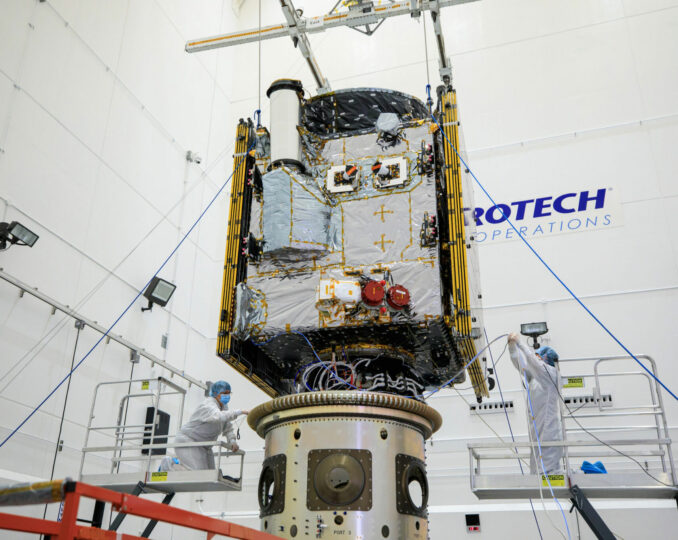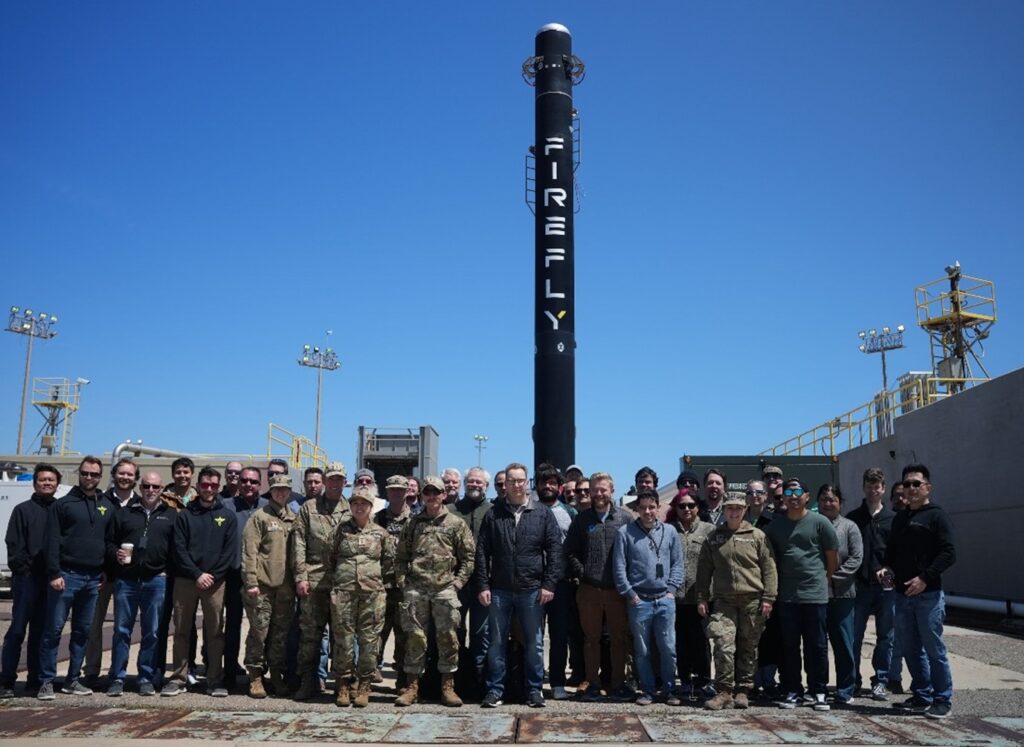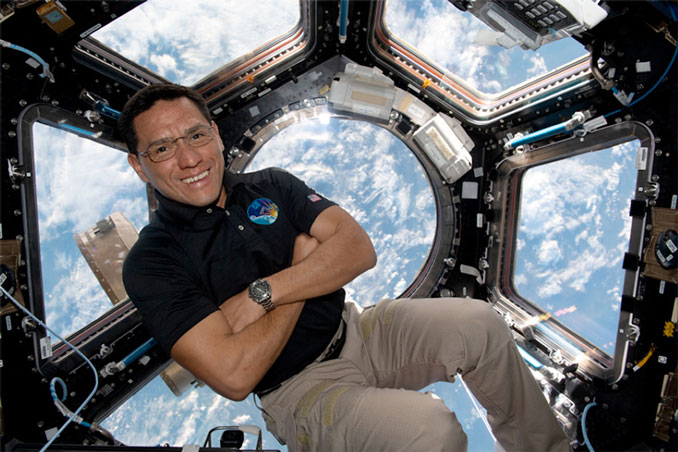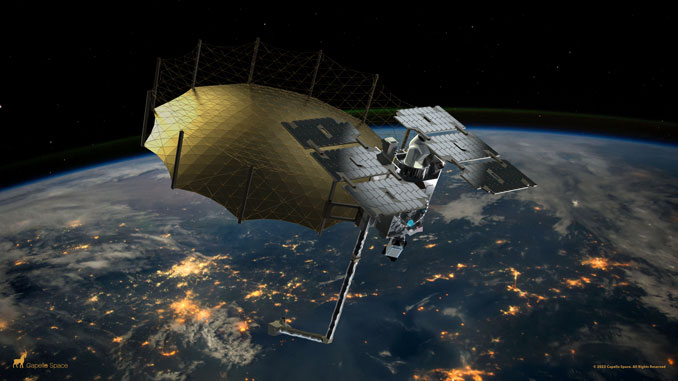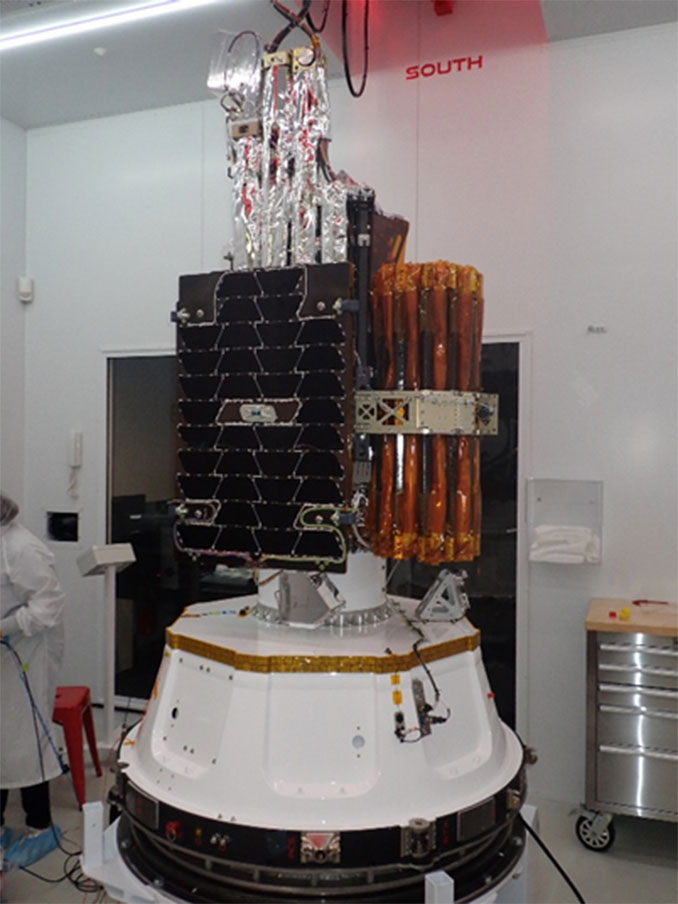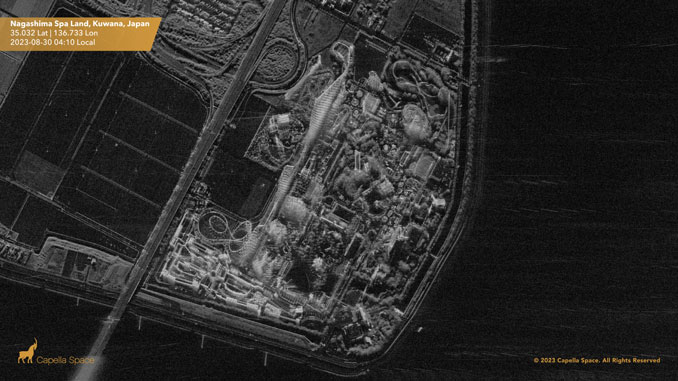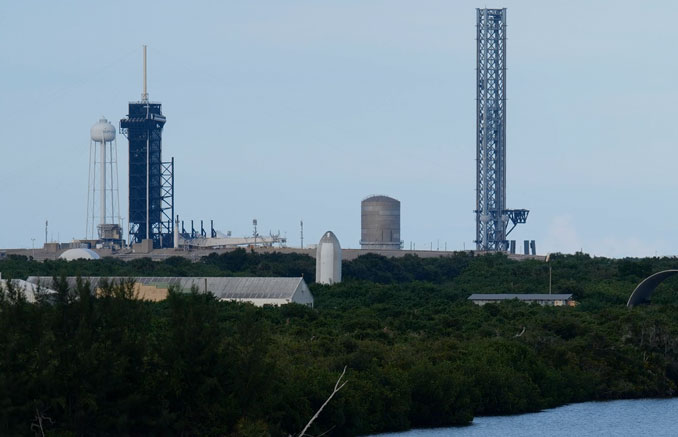A Falcon 9 rocket is scheduled for launch tonight on another mission to deliver satellites into orbit for SpaceX’s Starlink internet service. Liftoff from pad 40 at Cape Canaveral Space Force Station is planned for 6:39 p.m. EDT (2239 UTC).
It’s shaping up to be a busy night for SpaceX teams on the Florida Space Coast. Early Friday morning, at pad 39A at the Kennedy Space Center, they rolled out the Falcon Heavy rocket for NASA’s Psyche launch, now planned for Oct. 12. They plan to test fire its 27 first stage engines this evening, possibly while they are also counting down to the Falcon 9 launch. Spaceflight Now will bring you live coverage from both launch pads.
File photo a a Falcon 9 prior to a Starlink satellite delivery mission. Image: SpaceX.Stormy weather is forecast for Central Florida today and the 45th Weather Squadron at Cape Canaveral is predicting only a 40-percent chance of acceptable conditions for the Falcon 9 launch Friday evening. If necessary there are three additional launch opportunities on Friday at 7:34 p.m. EDT (2334 UTC), 10 p.m. EDT (0200 UTC) and 10:15 p.m. EDT (0215 UTC).
If the weather cooperates, the Falcon 9 will liftoff from pad 40 and target a trajectory that will take it south-east. Following stage separation, about two and half minutes into flight, booster 1069, which is making its tenth flight, will arc towards a landing on the drone ship “A Shortfall of Gravitas,” which will be stationed about 420 miles (675 km) downrange in the Atlantic east of the Bahamas.
It will be SpaceX’s 43rd Starlink delivery mission of the year. If all goes according to plan, 22 of the so-called V2 Mini satellites, will be released into orbit an hour and five minutes after liftoff.

